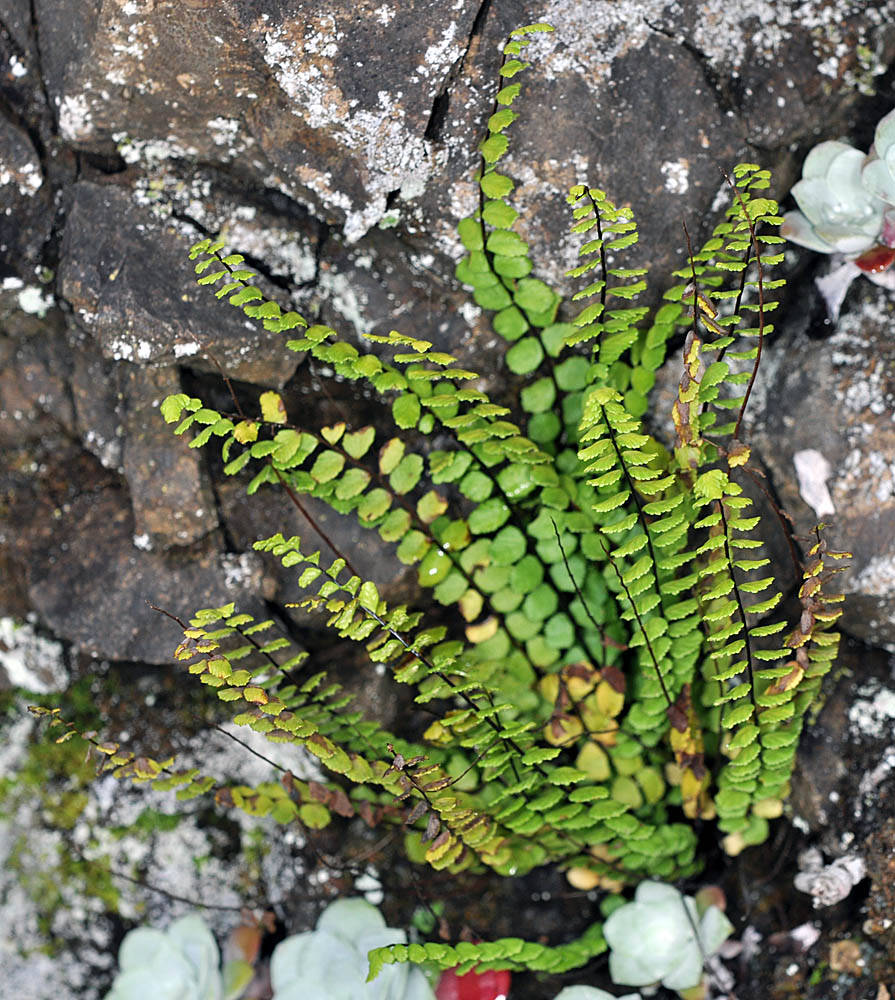
Stems erect or ascending, usually unbranched, densely covered with scales and persistent long leaf bases; scales more or less bicolored, usually with a darker central stripe.
Leaves up to 30 cm long, evergreen, old leaves shedding leaflets leaving a twig-like petiole and rachis.
Petioles of mature leaves glossy yellowish brown, usually short, up to 25% the leaf length, semicircular in cross section with 2 narrow wings bordering the flat adaxial side; rachis similar in color to the petiole, sometimes green near the tip; petiole and rachis with sparse narrow lattice-like scales and glandular hairs or glabrescent.
Blades linear, 1-pinnate, to approximately 20 × 1.8 cm.
Pinnae ovoid or oblong, to 8 × 6 mm, sparsely glandular-pubescent to glabrous; margins crenate with broad teeth; apex rounded; base unequal.
Sori linear to oblong, to 2.5 mm long, on lateral veins diverging from the costa at an acute angle, usually 4–8 sori per segment; indusia pale, borne on 1 side of the sorus and partially covering it.
2n=72.
Moist rock crevices, rarely on soil. 0–1600 m. Casc, CR, WV. CA, WA; western and northeastern Canada and much of US; Eurasia. Native.
Asplenium trichomanes ssp. quadrivalens has been collected once in Oregon. It is a polyploid (2n=144) with larger spores than spp. trichomanes (37–43 μm, vs. 27–32 μm). It is reported to grow in crevices in limestone and other calcareous substrates.
as described under Asplenium trichomanes ssp. trichomanes
Spores (as measured in Hoyer's Solution) 27--32 µm. 2 n = 72.Acidic rocks such as sandstone, basalt, and granite, very rarely on calcareous rocks; 0--3000 m; B.C., N.B., Nfld., N.S., Ont., Que.; Ala., Alaska, Ariz., Ark., Calif., Colo., Conn., Del., Ga., Ill., Ind., Kans., Ky., La., Maine, Md., Mass., Mich., Minn., Mo., Nebr., N.H., N.J., N.Mex., N.Y., N.C., Ohio, Okla., Oreg., Pa., R.I., S.C., S.Dak., Tenn., Tex., Vt., Va., Wash., W.Va., Wis., Wyo.; Mexico in Chihuahua; Europe; Asia; Africa; Australia.In southern Illinois Asplenium trichomanes subsp. trichomanes hybridizes with A . rhizophyllum to produce A . × shawneense (R. C. Moran) H. E. Ballard (R. C. Moran 1981).